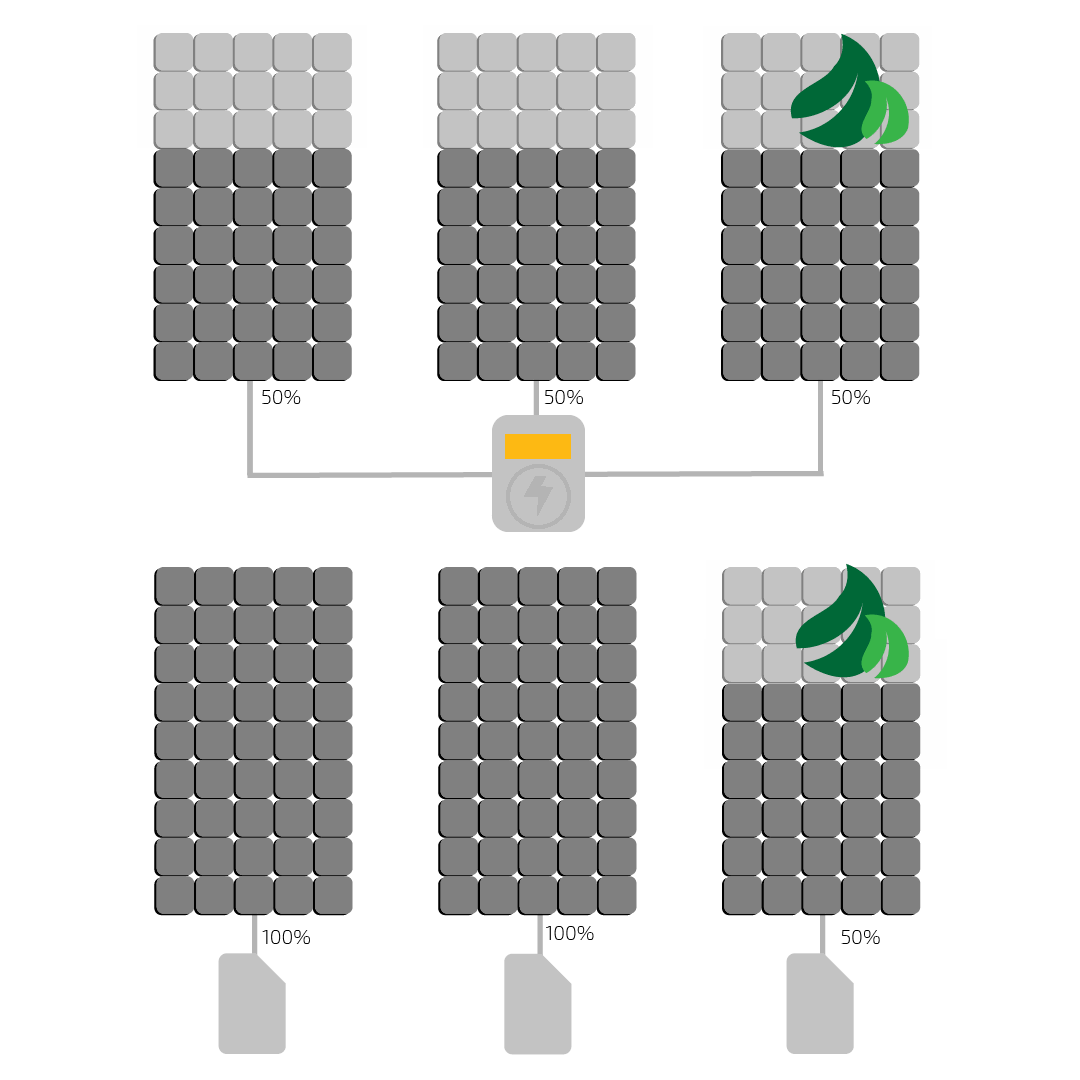SOLAR INVERTERS; MICRO OR STRING?
While solar energy may seem as simple as panels to power, there are a few steps and components in between to convert light from the sun into usable electricity. Solar panels output direct current (DC), which is not compatible with common household appliances nor the main grid, which use Alternating Current (AC) – this is where the inverter comes in. Arguably the most important component to any solar system, the inverter converts DC power to AC power before sending it to the switchboard to be used by the home or business. Solar components are chosen specifically around the unique characteristics of the project (residential or commercial) to create an optimised solution based on safety, performance and quality. With no two projects the same, choosing the correct components based on the distinctive features of the installation site and property is vital for the systems performance, longevity and value.

WHAT ARE STRING INVERTERS?
String inverters are the most cost-effective option when initially installing a solar system. Often paired with power optimisers, string inverters work by attaching to solar panels by “strings”, hence their name. This standalone box is typically installed close to the main server/switch box making for easier system maintenance as no electronics are present on the roof. A string inverter system can be customised and built upon depending on the size of the installation, there may be more than one string inverter present.
- Low upfront cost
- Known for their durability and reliability
- Lower probability of wiring issues
- Easy to troubleshoot

WHAT ARE MICROINVERTERS?
Simply put, microinverters perform the same basic function as string inverters, except they are installed underneath each solar panel on a roof. Unlike string inverters, microinverters work by optimising and converting the output of each panel independently providing both system and panel-level monitoring.
- Extensive monitoring capabilities
- Long lifespan
- Easily built upon for future expansions
- Flexible around challenging installations
MICROINVERTERS vs STRING INVERTERS
As solar technology has developed over the years, both string and microinverters offer the reliability and productivity we have come to expect from a high performing solar system; but there are some distinct differences between the two. As microinverter technology has become more widely available to the residential market with prices lowering, they have become a more competitive option in the industry. However, the tried-and-true string inverter technology has become a solar staple and remains the most cost-effective choice for installation. While the upfront cost of the inverter selection is notable, so too are the differences in warranty and longevity. Microinverters are the more expensive choice but typically offer a 25-year warranty while string inverters tend to be around 8-12 years. As microinverter technology has evolved and developed over the years so too has their reliability and performance and this extended warranty displays just how confident manufacturers are with this technology.

While the most suitable type of inverter will be dependent on the installation scenario, the core advantage of microinverters over string inverters is their ability to optimise the yield from each individual panel. Solar panels that are configured into a string only perform to that of the least-producing panel in the string which can affect the system's performance when panels are shaded or compromised from external factors. As a string inverter is installed close to the main server and off the roof, it allows for a much easier installation, access point and troubleshooting process compared to that of a microinverter. With the most likely failure point in a solar system being the inverter, having this technology centralised and off the roof makes for a fairly attractive advantage.
As microinverters are attached to every solar panel on the roof when a failure occurs troubleshooting can become an expensive and drawn-out process. Servicing or replacing a component can be more difficult than string inverter technology, but with extensive monitoring capabilities, this process can be made less burdensome. With most inverter manufacturers now offering system monitoring apps or websites, tracking your systems production, errors and overall health, users can remotely analyse their energy consumption and faults themselves. Microinverter technology allows users access to panel-level monitoring giving owners a more in-depth analysis than what string inverter technology allows.KEY TAKEAWAYS
As system designs are dependent on the installation site and the external factors that influence it, there are varying options available in the inverter market. Choosing a component and installer that is the correct fit for your home or business is vital to the overall performance, productivity and lifespan of your system. While there are some clear advantages and disadvantages to each inverter, choosing between the two will come down to these factors and which poses a more cost-effective outcome.
SPRINGERS SOLAR - WHAT WE RECOMMEND
At Springers Solar we only recommend and install quality components that have been expertly selected by our team of in-house engineers, solar experts and project managers. We design our systems to fit the unique requirements of your home or business and only select the components that will perform under those conditions. We are trusted by some of the largest inverter manufacturers in the world and are recognised as preferred/recommended installers for a large portion of them. Making the choice to solar is an investment so taking the time to research and choose components that will work for your project is important to us. These are the inverter brands that we trust and install:





Choosing the Right Inverter - String Inverters vs. Microinverters